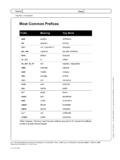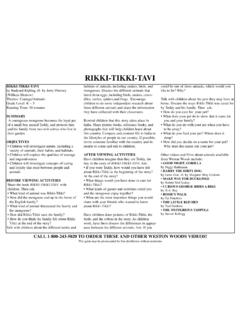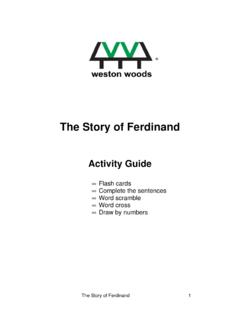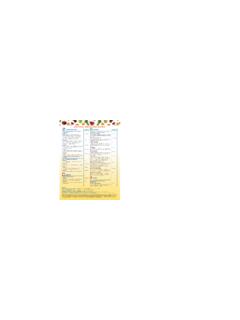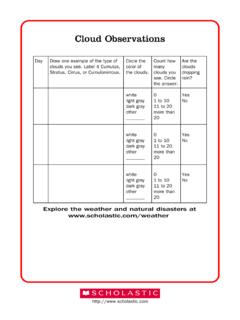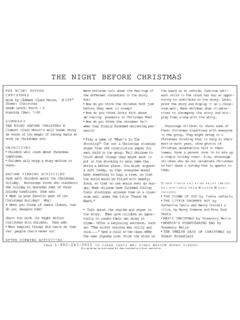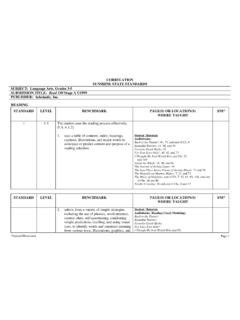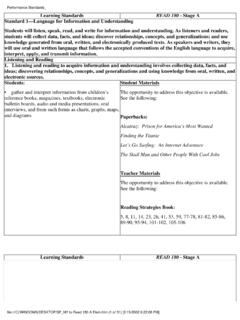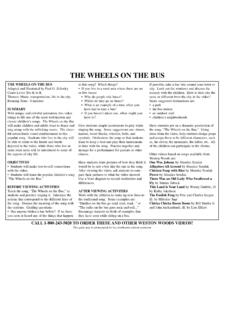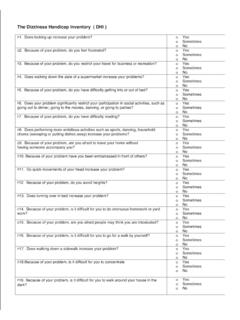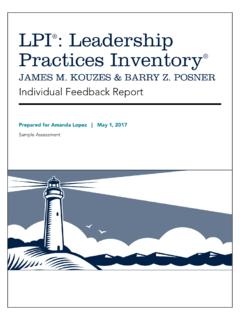Transcription of Scholastic Reading Inventory
1 Scholastic Reading Inventory Research Summary Scholastic Inc. 1 Scholastic Reading Inventory (SRI) Interactive is a computer-adaptive assessment designed to measure how well students read literature and expository texts of varying difficulties. This psychometrically valid assessment instrument can be used as a diagnostic tool to place students at the best level in the program so they can read with success. Validity is the extent to which a test measures what its authors or users claim it measures; specifically, test validity concerns the appropriateness of inferences that can be made on the basis of test results. (Salvia and Ysseldyke, Assessment, 7th Edition, 1998). In other words, validity indicates whether the test measures what it is supposed to measure. Results of Selected Studies A research-based program, SRI has been the subject of six validation studies. The research ranges from a norming study with a sample of 512,224 students (this study was not conducted with the SRI) to an analysis of gender, race, and ethnic differences among fourth- through ninth-grade students.
2 Below is a summary of the findings of the validation studies for SRI Interactive: The normative study was based on a sample of 512,224 students from a medium-large state. On national norming studies, this state has shown similar means and standard deviations to the nation as a whole. This similarity makes the sample suitable for approximating national norms. Because each student in the sample has taken a test linked to the Lexile Framework, these national norms can be reported in Lexiles. SRI Interactive uses the same item format as the print version of SRI. High correlations with many standardized tests strongly validate the SRI (print version) as a measure of Reading comprehension. SRI (print version) is highly correlated with the Stanford Achievement Test (version 8) and the North Carolina End-of-Grade Test of Reading Comprehension (NCEOG). No significant differences in SRI (print version) scores were observed between males and females, or between various racial/ethnic groups, for samples of approximately 19,000 students in grades four through nine.
3 During field testing, SRI Interactive results were correlated with SRI (print version), the Comprehensive Test of Basic Skills (CTBS), the North Carolina End-of-Grade Test of Reading Comprehension (NCEOG), and the Pinellas Instructional Assessment Program (PIAP). Correlation coefficients ranged from .56 (with CTBS) to .83 (with SRI print version). Field testing of the test levels for SRI (print version) were equated within grade and scaled from grade to grade. The equating and scaling are validated by the consistency of different instruments reproducing the same Lexile measures for the same readers. Scholastic Reading Inventory Research Summary Scholastic Inc. 2 SRI Interactive was field tested with 879 students in grades three, four, five, and seven, from four schools in North Carolina and Florida. Students took both the SRI Interactive and the SRI (print version) for validation.
4 The Scholastic Reading Inventory (SRI) is a criterion-referenced test intended to measure Reading comprehension and match students to text so they can read with confidence and control. Results from SRI are reported as scale scores (Lexile measures). The scale goes from Beginning Reader (less than 100L) to 1500L. A Lexile measure is determined by the difficulty of the items to which a student responded. The Lexile Framework is a Reading measure that matches students to text. It is unique because it uses a common metric a Lexile measure to assess both the Reading ability of the reader and the readability of the text, making the Framework more than just a measure of readability. By placing both reader and text on the same absolute scale this focus on the reader (as well as the text) enables educators to not only look at the Reading standard for the grade level, but the standard for the individual student as well- an understanding that is imperative to facilitating and monitoring Reading growth.
5 Scholastic Reading Inventory (SRI) THEORETICAL FRAMEWORK Research & Rationale for Scholastic Reading Inventory (SRI) What is the Research Behind the Lexile Framework? Over the past 15 years recognized scientists in the field of testing and measurement from Duke University, the University of Chicago, Stanford University, and the University of North Carolina created the Lexile Framework with support from grants by the National Institute of Child Health and Human Development. What Makes the Lexile Framework Unique? The Lexile Framework is revolutionary because it places both readers and text on a common scale, providing both text and reader measures. This unique feature allows educators to more accurately match students to appropriately leveled text. Matching students to text improves comprehension, boosts confidence, and encourages students to read more. Another unique feature of the Framework is that it measures the difficulty of the entire book, not just isolated passages or sentences as most other readability formulas do.
6 How Does the Lexile Framework Benefit Educators and Students? The Lexile Framework Provides educators with a highly effective tool for evaluating and monitoring students Reading achievement. Enables teachers to match students to text, which is necessary for readers to grow. Provides an excellent means of encouraging parental involvement, by giving parents both a clear idea of their child s progress and a selection of books that parent and child can read together. Scholastic Reading Inventory Research Summary Scholastic Inc. 3 Scholastic Reading Inventory (SRI) THEORETICAL FRAMEWORK Research & Rationale for Scholastic Reading Inventory (SRI) Why Did Scholastic Choose to Use the Lexile Framework? Lexile measures are reported through such high-stakes standardized tests as the SAT-9, SDRT-4, MAT-8, TerraNova Assessment Series (CTBS/5 and CAT/6), North Carolina End-of-Grade Test, and others.
7 More states and test publishers plan to adopt the research-proven Lexile Framework in the future. Lexile measures have been given to more than 35,000 books, fiction and nonfiction, from hundreds of publishers. New titles are added monthly. In addition, many textbooks from hundreds of publishers have been Lexiled, as well as newspapers, magazines, manuals, etc. References Salvia, J. and Ysseldyke. Assessment, 7th Edition. New York: Houghton Mifflin Company, 1998. Scholastic is committed to the sustainability of quality programs, both during and after the rollout of No Child Left Behind. We currently have strong relationships with students and teachers in thousands of schools across the country and we would like to establish a long-term partnership with you. We would be happy to schedule a visit should you be interested in a product demonstration or a more detailed discussion about how Scholastic can help you provide students with the skills and strategies needed to succeed in school.
8 Please contact the Western Regional Office at (800) 225-4625, if you have any questions or would like more information. Thank you. Scholastic Inc.
